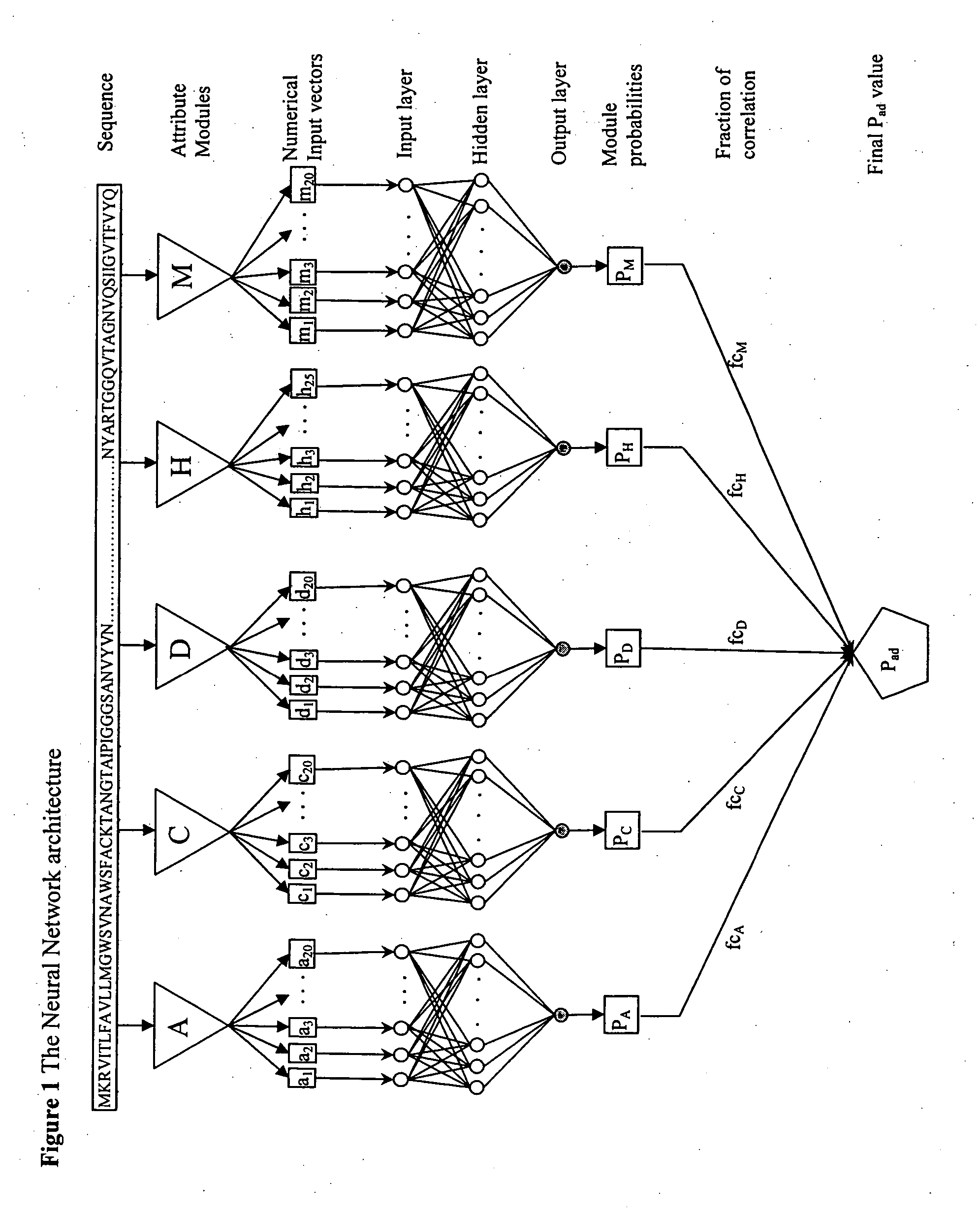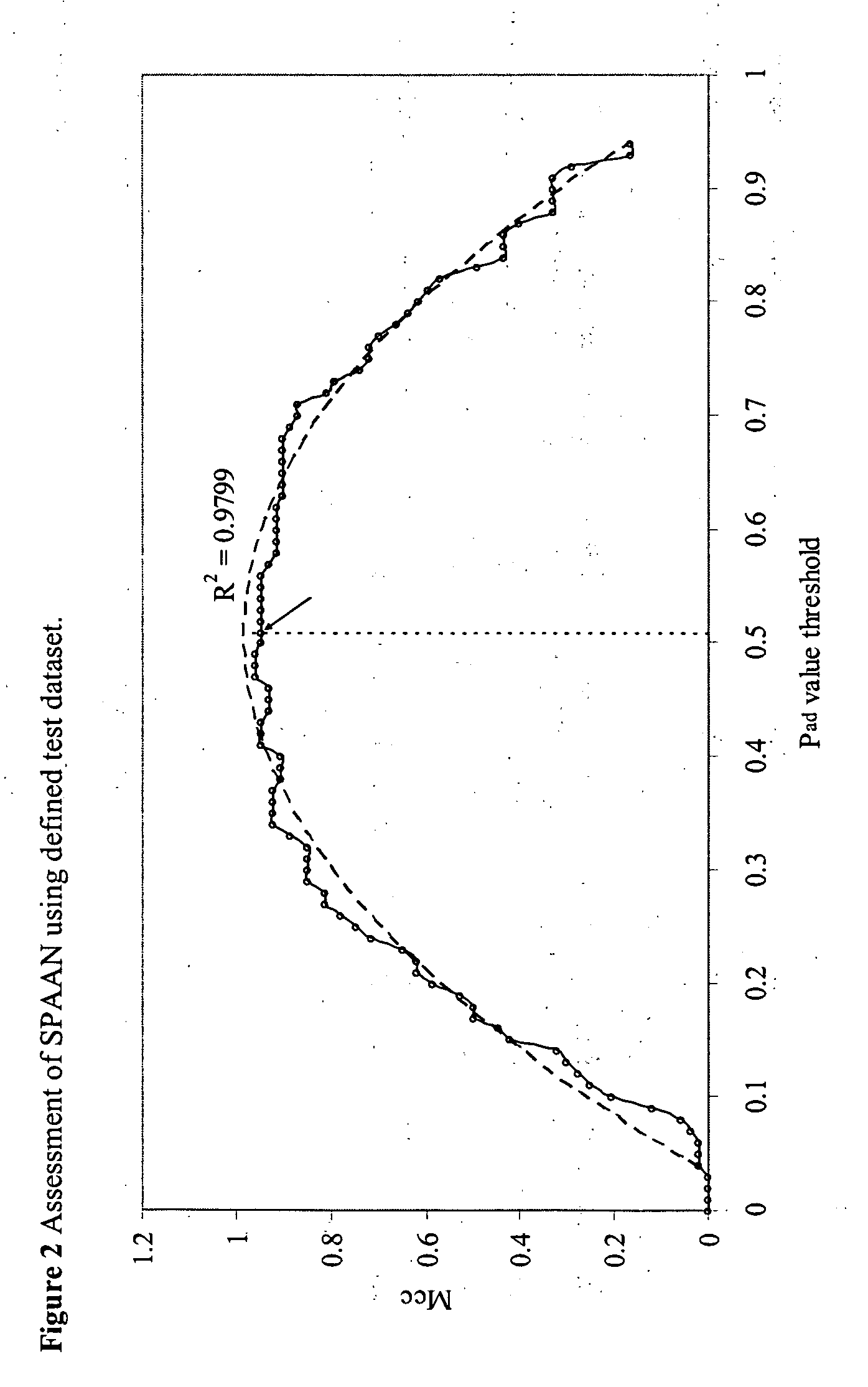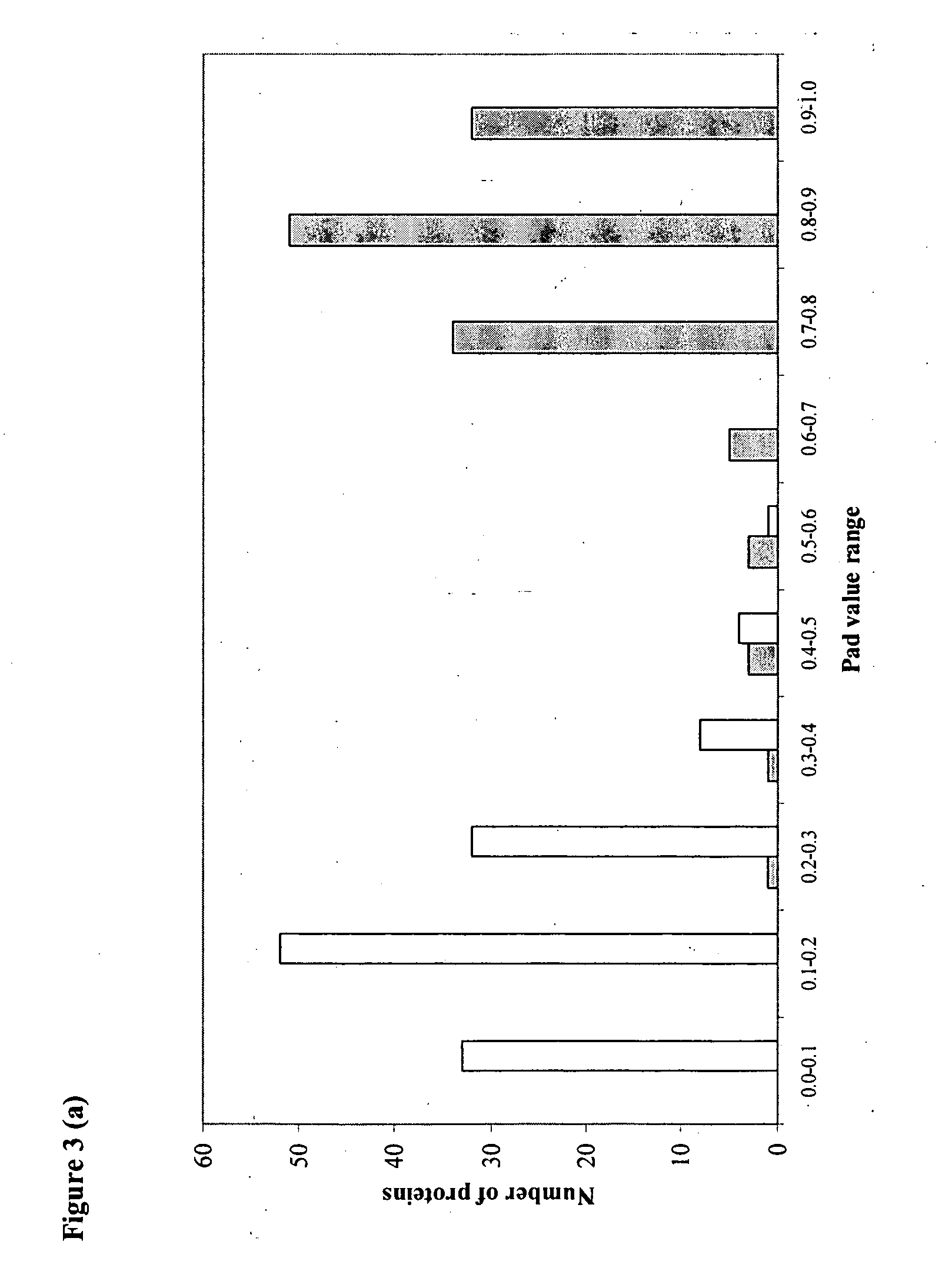Computational method for identifying adhesin and adhesin-like proteins of therapeutic potential
a technology of adhesin and like proteins, applied in the field of computational methods for identifying adhesins and adhesinlike proteins, can solve the problems of difficult elucidation of the specific role of particular adhesins, laborious screening of adhesins and adhesin-like proteins by conventional experimental methods, and high sequence divergence, so as to facilitate the identification of adhesins and avoid sequence divergence. , the effect of time-consuming
- Summary
- Abstract
- Description
- Claims
- Application Information
AI Technical Summary
Benefits of technology
Problems solved by technology
Method used
Image
Examples
example 1
Operating SPAAN:
[0141] The purpose of the program is to computationally calculate various sequence-based attributes of the protein sequences.
[0142] The program works as follows:
[0143] The internet downloaded FASTA format files obtained from http: / / www.ncbi.nlm.nih.gov were saved by the name .faa are converted in the standard format by C program and passed as input to another set of C programs which computes the 5 different attributes of protein sequences (a total of 105 compositional properties in all 5 modules).
[0144] The computed properties were fed as input to the 5 different Neural Networks. Each trained network assigns a probability value of being an adhesin for a query protein. The final probability (Pad) was calculated as weighted average of these five individual probabilities. The weights were determined from a correlation value of correct; prediction during test runs of each of the five modules.
[0145] Input / Output format:
[0146] Downloaded Files and their format: [014...
example 2
Organisms and Sequence Numbers
[0155]
TABLE 2Organism Name, Accession number, Number of base pairs, Date of releaseand Total number of proteins analyzedAccessionNumber ofTotalOrganism NameNumberbase pairsDate of releaseno. of proteinsE. coli O157 H7NC_00269554984507-Mar-20015361H. influenzae RdNC_000907183013830-Sep-19961709H. pylori J99NC_000921164383110-Sep-20011491M. pneumoniaeNC_0009128163942-Apr-2001689M. tuberculosis H37RvNC_00096244115297-Sep-20013927R. prowazekii strain Madrid ENC_000963111152310-Sep-2001835P. gingivalis W83NC_00295023434769-Sep-20031909S. flexneri 2a str. 2457TNC_004741459935423-Apr-20034072S. mutans UA159NC_004350203092125-Oct-20021960S. pneumoniae R6NC_00309820386156-Sep-20012043N. meningitidisNC_003116218440627-Sep-20012065serogroup A strain Z2491S. pyogenes MGAS8232NC_0034851895017Jan 31, 20021845T. pallidum subsp.NC_00091911380117-Sep-20011036pallidum str. NicholsSevere AcuteAY2913152972711-JUN-200314Respiratory Syndrome(SARS) associatedcoronavirus Fran...
example 3
[0156] The multi-layered feed forward Neural Network architecture implemented in SPAAN (FIG. 1). A given protein sequence in FASTA format is first processed through the 5 modules A, C, D, H, and M to quantify the five types of compositional attributes. A: Amino acid composition, C: Charge composition, D: dipeptide composition of the 20 dipeptides (NG, RE, TN, NT, GT, TT, DE, ER, RR, RK, RI, AT, TS, IV, SG, GS, TG, GN, VI, HR), H: Hydrophobic composition, M: Amino acid frequencies as Multiplets. The sequence shown is part of the FimH precursor (gi 5524634) of E. coli. Subsequently, these numerical data are input to the input neuron layer. The directions of arrows show data flow. The number of neurons chosen in the input layer was equal to the number of the numerical input vectors of each module. The network was optimally trained through minimization of error of detection based on validate set through back propagation. The details are described in the methods. Each network module assi...
PUM
| Property | Measurement | Unit |
|---|---|---|
| pH | aaaaa | aaaaa |
| length | aaaaa | aaaaa |
| amino acid frequencies | aaaaa | aaaaa |
Abstract
Description
Claims
Application Information
 Login to View More
Login to View More - R&D
- Intellectual Property
- Life Sciences
- Materials
- Tech Scout
- Unparalleled Data Quality
- Higher Quality Content
- 60% Fewer Hallucinations
Browse by: Latest US Patents, China's latest patents, Technical Efficacy Thesaurus, Application Domain, Technology Topic, Popular Technical Reports.
© 2025 PatSnap. All rights reserved.Legal|Privacy policy|Modern Slavery Act Transparency Statement|Sitemap|About US| Contact US: help@patsnap.com



